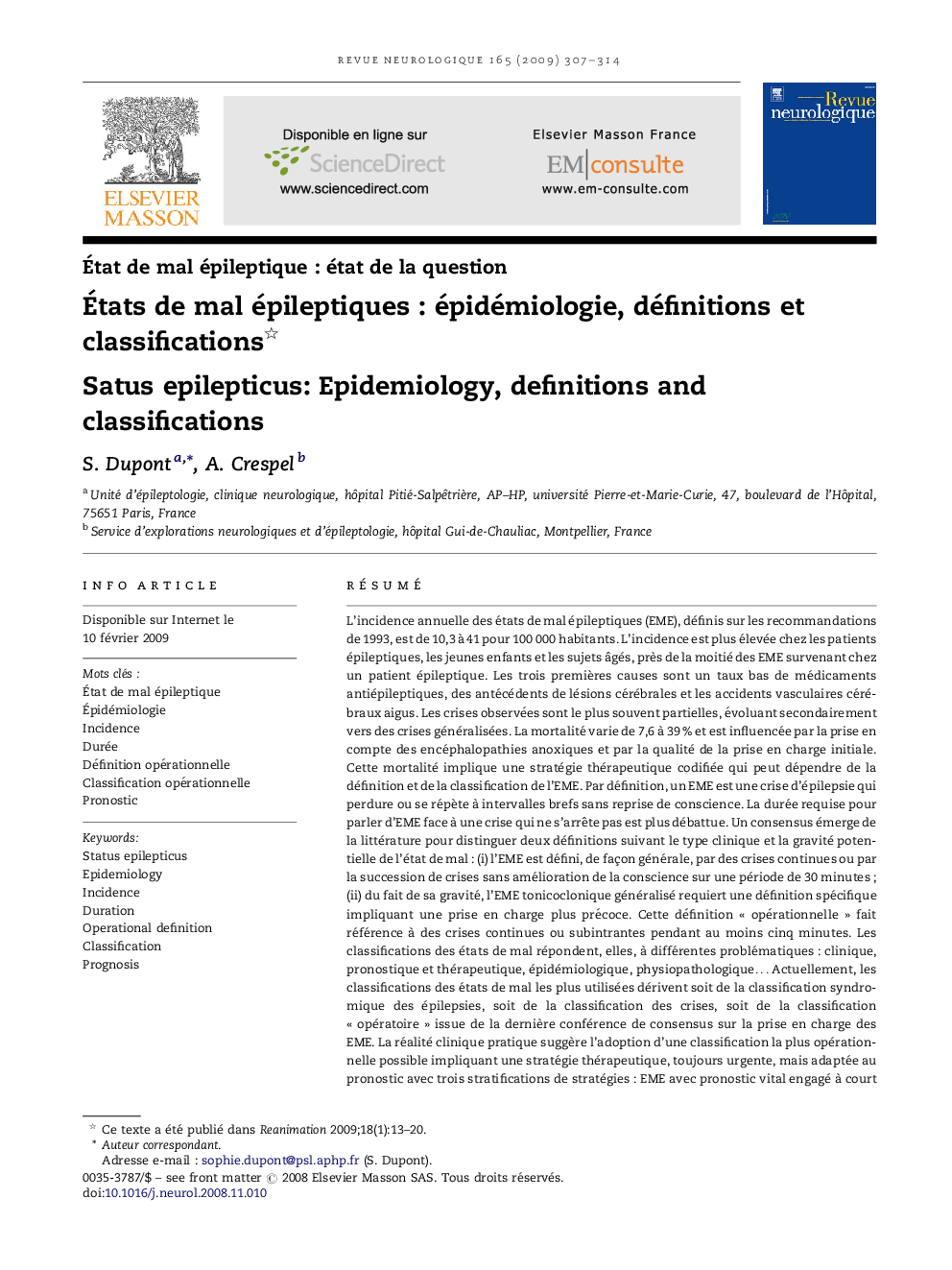| کد مقاله | کد نشریه | سال انتشار | مقاله انگلیسی | نسخه تمام متن |
|---|---|---|---|---|
| 3089712 | 1190236 | 2009 | 8 صفحه PDF | دانلود رایگان |
عنوان انگلیسی مقاله ISI
Ãtats de mal épileptiques : épidémiologie, définitions et classifications
دانلود مقاله + سفارش ترجمه
دانلود مقاله ISI انگلیسی
رایگان برای ایرانیان
کلمات کلیدی
Epidemiology - اپیدمیولوژی(همهگیرشناسی)status epilepticus - بحران صرعی یا صرع پایدارIncidence - بروز Operational definition - تعریف عملیاتیÉtat de mal épileptique - صرع وضعیتClassification - طبقه بندیDurée - مدتDuration - مدت زمانÉpidémiologie - همهگیرشناسیPronostic - پیش بینیprognosis - پیش شناخت بیماری
موضوعات مرتبط
علوم زیستی و بیوفناوری
علم عصب شناسی
عصب شناسی
پیش نمایش صفحه اول مقاله

چکیده انگلیسی
The annual incidence of status epilepticus based on the definitions of the International League Against Epilepsy (1993) ranges from 10.3 to 41 per 100,000 inhabitant. Half of the cases of status epilepticus concern epileptic patients. In all studies, incidence is higher in epileptic patients, young children and the elderly. It is estimated that 13% of patients with status epilepticus will experience recurrence during the two first years. The three leading etiologies are low-dose antiepileptic drugs, non-acute brain lesions and acute stroke. Seizures are generalized in 9 to 33% of patients and focal in 25 to 75%. Secondary generalized seizures can be observed in 19 to 66% of patients. Mortality ranges from 7.6 to 39% and varies as a function of inclusion of postanoxic encephalopathies and difference in initial care. The definition retained and the classification adopted for status epilepticus also affect mortality estimates. Status epilepticus is defined as the existence of a prolonged seizure or a series of seizures during which the patient does not recover, or incompletely recovers, consciousness. The duration parameter used to distinguish status epilepticus from a seizure remains controversial. At the present time, there is general agreement in the literature distinguishing two definitions based on different durations according to the clinical type of status epilepticus and its potential severity: (i) a status epilepticus is defined by a seizure lasting more than 30 minutes or recurrent seizures without recovery of consciousness over a period of 30 minutes; (ii) considering its severity, tonic-clonic status epilepticus has a specific definition leading to earlier therapeutic management. This operational definition is continuous, generalized, convulsive seizure lasting more than five minutes or two or more seizures during which the patient does not return to baseline consciousness. Several types of background can be used to establish a classification for status epilepticus: clinical manifestations, prognostic and therapeutic course, epidemiological data, pathophysiological mechanisms⦠At the present time, the classifications most commonly used in France for status epilepticus are derived from the syndromic epileptic classification, the seizure classification or the classification proposed by the French consensus workshop on status epilepticus. For routine clinical practice, an operational classification can be used to adopt therapeutic strategies adapted to probable prognosis: short-term life-threatening, mid-term life-threatening, not life-threatening.
ناشر
Database: Elsevier - ScienceDirect (ساینس دایرکت)
Journal: Revue Neurologique - Volume 165, Issue 4, April 2009, Pages 307-314
Journal: Revue Neurologique - Volume 165, Issue 4, April 2009, Pages 307-314
نویسندگان
S. Dupont, A. Crespel,